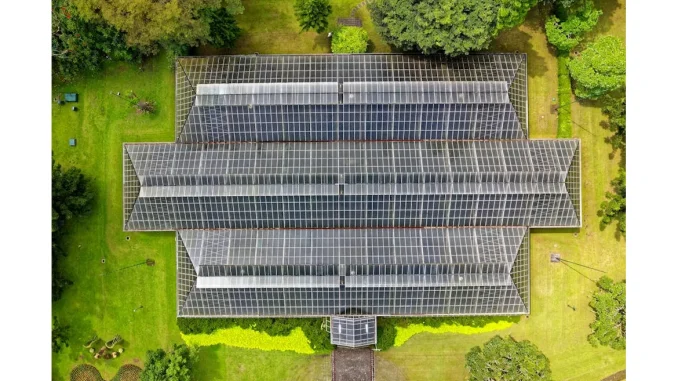
In a landmark announcement by the United Nations, it has been revealed that the infrastructure and construction sector is responsible for an overwhelming 79 percent of global greenhouse gas emissions. This startling figure signifies an urgent call to action for the construction industry to address its environmental impact and transition towards a net-zero future. Recognising this imperative, various initiatives and organisations have introduced innovative measures to revolutionise construction contracts and promote sustainable practices within the sector.
Read more about sustainable development.
The New Engineering Contract (NEC) has adopted a proactive stance by integrating secondary option X29 climate change clauses. These clauses require contractors to comply with rigorous climate change stipulations and develop comprehensive climate change plans. This initiative represents a pivotal step towards curbing carbon emissions and promoting sustainability within the industry. Moreover, the Chancery Lane Project has led the development of new contractual model clauses that specifically tackle climate change solutions within construction contracts.
Among these pioneering clauses, “Ashkan’s Clause” is particularly noteworthy as it incentivises contractors to adopt eco-friendly practices via a green retention fund. Additionally, “Ayshe’s Clause” aims to enhance transparency in supply chains for renewable energy assets, while “Edgar’s Clause” focuses on nature-based solutions and the preservation of biodiversity on project sites, closely aligning with the Paris Agreement’s objectives for achieving net-zero emissions.
A report released by the UN Environment Programme in 2022, through the Global Alliance for Buildings and Construction, has highlighted a widening gap between the construction sector’s current climate performance and the required decarbonisation trajectory. This underscores the critical importance of initiatives like “Mary’s Clause,” which mandates specific energy efficiency requirements upon project completion, and “Madhavi’s Clause,” which advocates for sustainable practices in modern construction methodologies. The necessity to address sustainability issues in construction projects has become non-negotiable, as decision-makers increasingly leverage construction contracts to promote climate change goals and mitigate associated risks.
White & Case, an international legal practice, offers valuable insights into the evolving landscape of climate contracting within the construction industry, emphasising the need for proactive measures to achieve swift and equitable decarbonisation. Green provisions within construction contracts are intricately linked to local environmental regulations and protections, necessitating alignment with internationally recognised standards such as BREEAM and LEED for rating and third-party certification in construction projects.
Competitive tendering processes and resource competition have driven bidders to seek safeguards against potential costs arising from new environmental legislation. Clauses like “Luna’s Clause” incentivise contractors to propose net-zero modifications to construction works for additional remuneration, underscoring the sector’s shift towards prioritising environmentally conscious practices. Furthermore, clauses such as “Francis’s Clause,” which mandates the implementation of site waste management plans to minimise waste generation, and “Izzy’s Clause,” which benchmarks contractors’ carbon footprints against industry standards with penalties for non-compliance, highlight the industry’s dedication to sustainable development.
In response to these challenges, industry stakeholders are increasingly turning to internationally recognised standards such as BREEAM and LEED for rating and third-party certification in construction projects. These standards are crucial in assessing and verifying the sustainability credentials of construction projects, driving the adoption of greener building practices. The construction sector’s critical role in supporting the UN’s sustainable development goals and the Paris Agreement on climate change cannot be understated. As decision-makers acknowledge the industry’s influence, initiatives like FIDIC aim to guide key stakeholders towards embracing sustainable practices and compliance with climate change and ESG requirements.
Construction contracts play a vital role in establishing greener methodologies, with provisions like those found in FIDIC contract forms from 1999 and the Joint Contracts Tribunal’s Design and Build Contract highlighting environmental protection and sustainable development. The inclusion of key performance indicators in contracts, such as those in the NEC4 Engineering and Construction Contract, enables contractors to track and report their progress towards sustainability objectives.
The construction industry’s growing awareness of the necessity for sustainable practices is underscored by initiatives like the Chancery Lane Project, which advocates for swift and equitable decarbonisation through climate contracting. As the industry navigates the complexities of meeting green requirements, financial incentives within construction contracts are essential in ensuring that targets and goals are achieved. Innovative clauses and provisions within these contracts represent a significant shift towards realising net-zero objectives and combating climate change.
By adopting sustainable practices and fostering a culture of environmental responsibility, the construction industry is positioned to play a transformative role in shaping a more sustainable and resilient future for generations to come. The transition towards a net-zero future in the construction sector requires a collaborative effort from all stakeholders involved. Through the adoption of innovative contractual solutions, stringent climate change clauses, and sustainable practices, the industry can pave the way for a greener, more sustainable future. As legal experts like White & Case provide guidance on navigating the evolving landscape of climate contracting, the industry is set to make substantial progress towards achieving net-zero objectives and addressing the urgent threat of climate change.


Be the first to comment